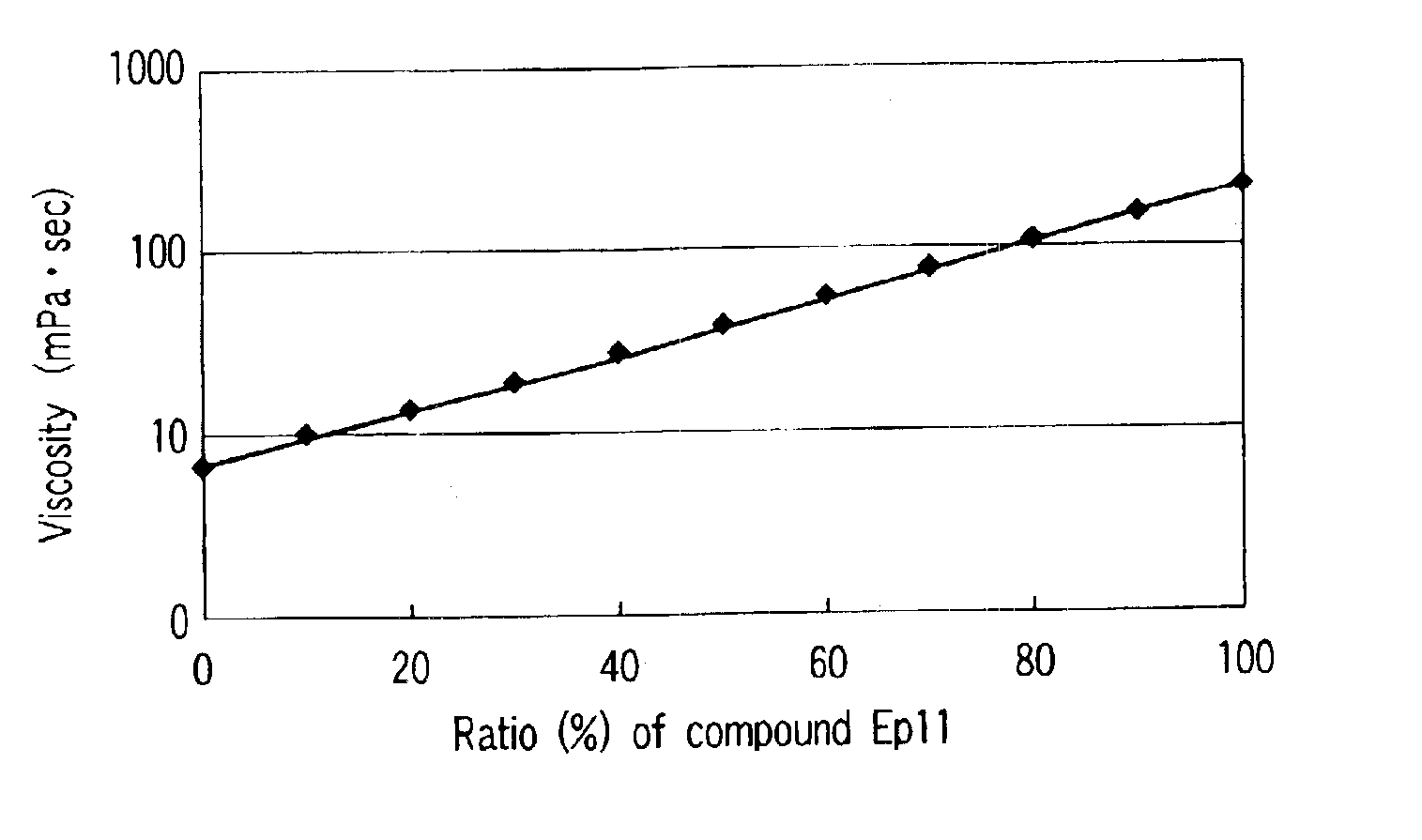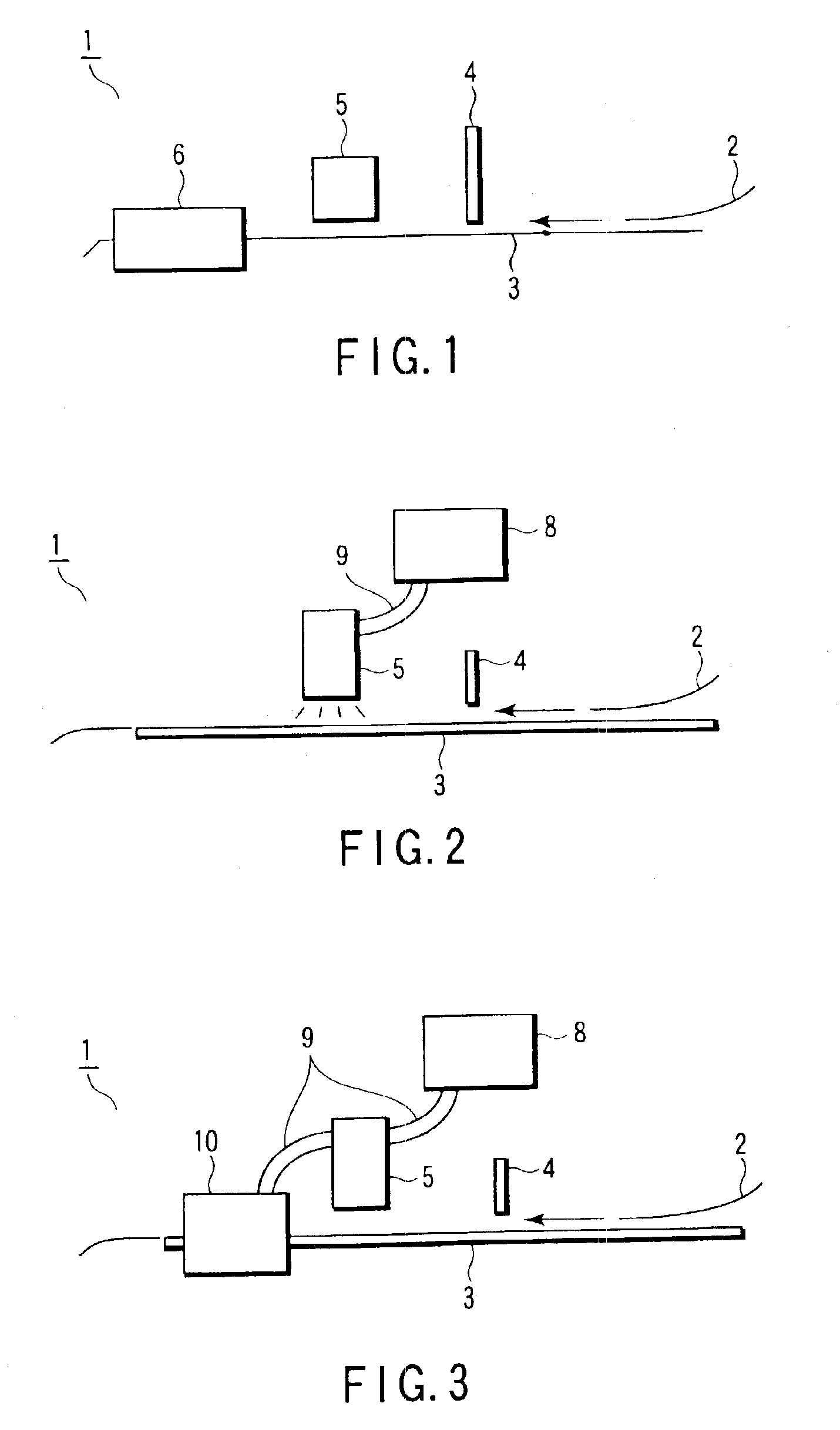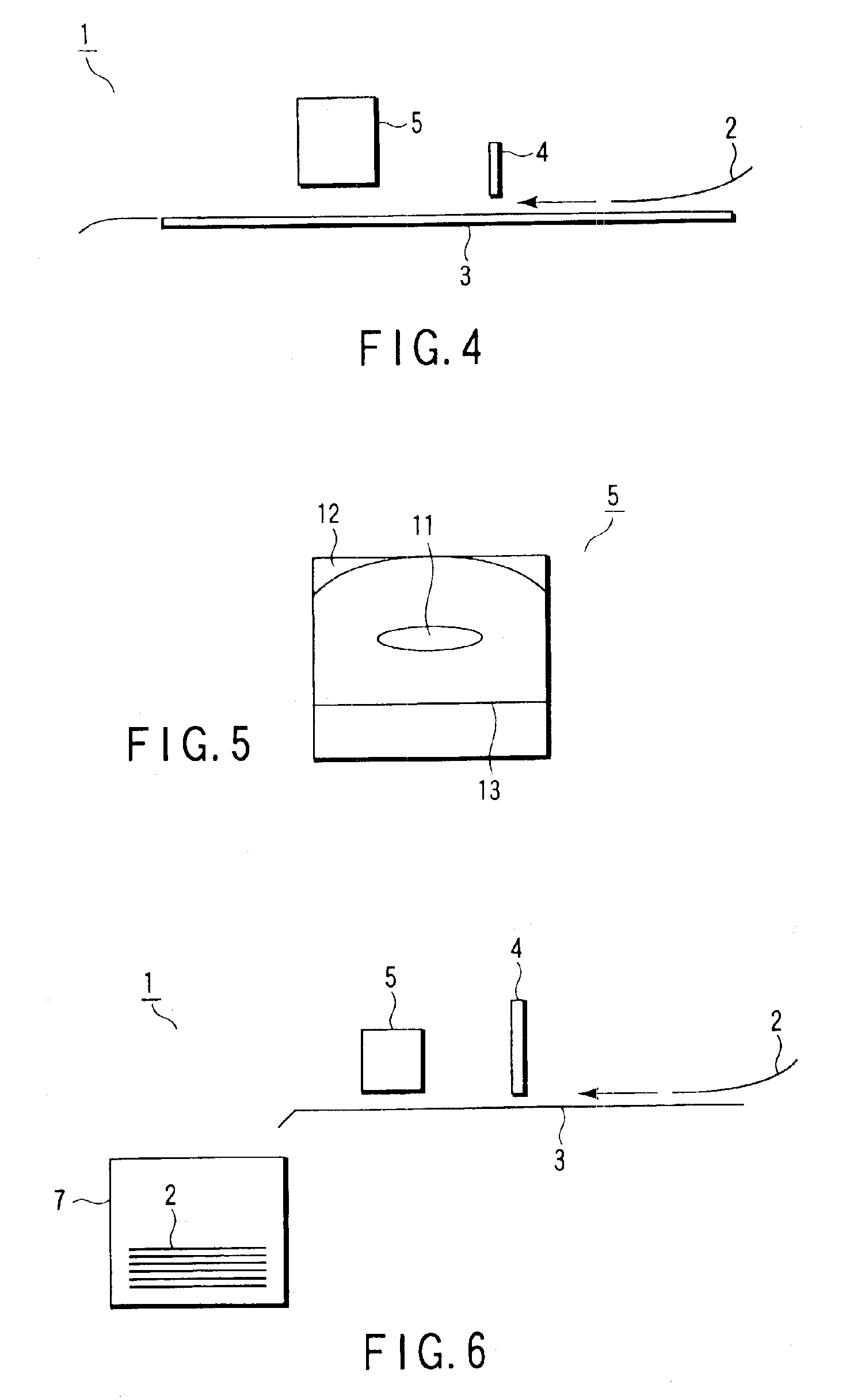Liquid ink and recording apparatus
a liquid ink and recording device technology, applied in the direction of instruments, optical elements, inks, etc., can solve the problems of difficult to solve the contamination problem of the surrounding atmosphere, the printing surface of the printing paper sheet, etc., and seriously affect the quality of the printed image, etc., to achieve high-quality printing
- Summary
- Abstract
- Description
- Claims
- Application Information
AI Technical Summary
Benefits of technology
Problems solved by technology
Method used
Image
Examples
example i
Example I-1
[0238]Compositions a1 to j1 were prepared by mixing acid polymerizable compounds (and resins) Ep1 to Ep16 given below, i.e., compounds polymerizable in the presence of an acid, in the mixing ratio given in Table 1:
Each of 1, m and n in the general formulas given above denotes an integer falling within a range of between 1 and 20.
[0239]
TABLE 1EpoxycompositionEpoxy compounds (% by weight)a1Ep3(100)b1Ep3(87.5)Ep11(12.5)c1Ep3(80)Ep11(10)Ep16(10)d1Ep2(70)Ep10(20)Ep12(10)e1Ep1(80)Ep9(10)Ep16(10)f1Ep7(50)Ep3(30)Ep10(10)Ep16(10)g1Ep3(40)Ep8(30)Ep13(10)Ep14(10)h1Ep3(40)Ep4(40)Ep11(12.5)Ep15(7.5)i1Ep6(50)Ep3(30)Ep11(10)Ep16(10)j1Ep5(30)Ep3(40)Ep12(20)Ep15(10)
[0240]A pigment and a photo acid generating agent were added to each of the compositions a1 to j1 by the prescriptions shown in Table. 2 below, and a dispersion treatment was applied for 24 hours by using a paint shaker. The mixture after the dispersion treatment was filtered by using a PTFE filter of 5 μm so as to obtain liqu...
example i-2
[0269]In the first step, compositions aa to ap were prepared by mixing acid polymerizable compounds (and resins) Ep21 to Ep38 given below in the mixing ratios shown in Table 4:
[0270]
Table 4Ep21Ep22Ep23Ep24Ep25Ep26Ep27Ep28Ep29Ep30Ep31Ep32Ep33Ep34Ep35Ep36Ep37Ep38CompositionsCompounds (% by weight)Liquid inksaaEp21 (87.5)Ep11 (12.5)(41)abEp22 (87.5)Ep11 (12.5)(42)acEp3 (50)Ep23 (50)(43)adEp3 (50)Ep24 (50)(44)aeEp3 (90)Ep27 (10)(45)afEp3 (50)Ep26 (50)(46)agEp3 (40)Ep25 (30)Ep28 (30)(47)ahEp3 (35)Ep28 (35)Ep29 (30)(48)aiEp3 (40)Ep30 (40)Ep29 (20)(49)ajEp3 (40)Ep28 (60)(50)akEp3 (40)Ep31 (40)Ep32 (30)(51)alEp3 (40)Ep33 (40)Ep34 (30)(52)amEp3 (40)Ep32 (40)Ep37 (30)(53)anEp3 (40)Ep26 (40)Ep36 (30)(54)aoEp3 (40)Ep32 (40)Ep35 (30)(55)apEp3 (40)Ep37 (30)Ep38 (30)(56)
[0271]Added to each of the compositions aa to ap were 5% by weight of carbon black used as a pigment and 8% by weight of UVACURE 1591 used as a photo acid generating agent, and each of the resultant mixtures was subjected to a disp...
example i-3
[0285]Kneaded was a mixture comprising a Co-γ-Fe2O3 powder pulverized to have a particle diameter of 500 nm, an acrylic dispersion used as a dispersant, an amphoteric resin used as an electrostatic processing agent, and traces of a metal soap, followed by dispersing the kneaded mass in the epoxy compound (Ep2) by using a paint shaker such that kneaded mass was contained in an amount of 5% by weight relative to the epoxy compound (Ep2). Further, PAG5 used as a photo acid generating agent was added in an amount of 8% by weight based on the epoxy compound, and the resultant mixture was filtered by using a PTFE filter of 5 μm so as to obtain a functional ink composition 1.
[0286]The functional ink composition thus obtained was spurted onto an absorbing medium, followed by exposing the absorbing medium to light at an exposing rate of 500 mJ / cm2 and subsequently heating the absorbing medium at 100° C. for 3 minutes. As a result, a magnetic pattern was formed on the medium. The magnetic pat...
PUM
| Property | Measurement | Unit |
|---|---|---|
| boiling point | aaaaa | aaaaa |
| viscosity | aaaaa | aaaaa |
| intrinsic viscosity ηt | aaaaa | aaaaa |
Abstract
Description
Claims
Application Information
 Login to View More
Login to View More - R&D
- Intellectual Property
- Life Sciences
- Materials
- Tech Scout
- Unparalleled Data Quality
- Higher Quality Content
- 60% Fewer Hallucinations
Browse by: Latest US Patents, China's latest patents, Technical Efficacy Thesaurus, Application Domain, Technology Topic, Popular Technical Reports.
© 2025 PatSnap. All rights reserved.Legal|Privacy policy|Modern Slavery Act Transparency Statement|Sitemap|About US| Contact US: help@patsnap.com



